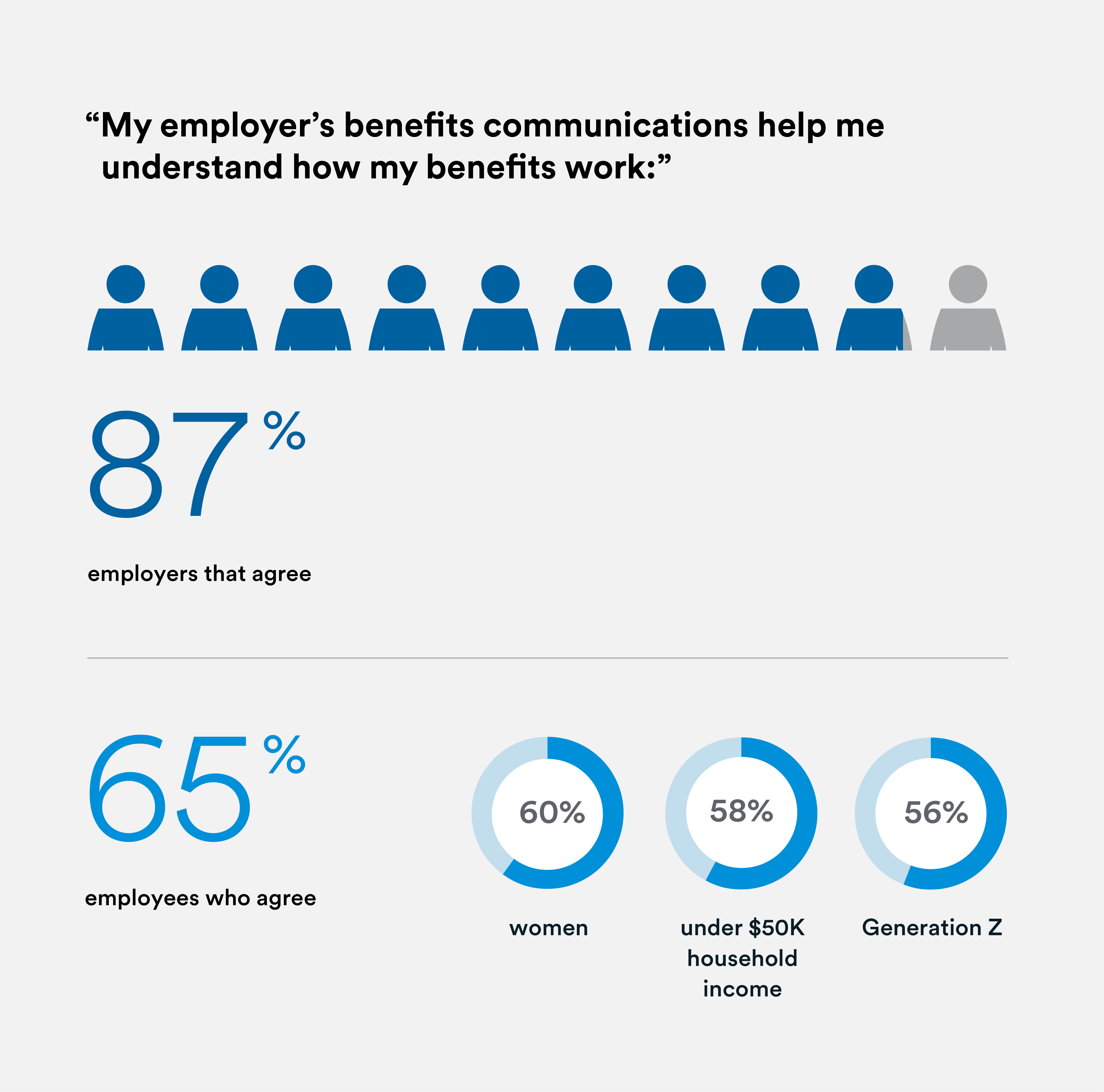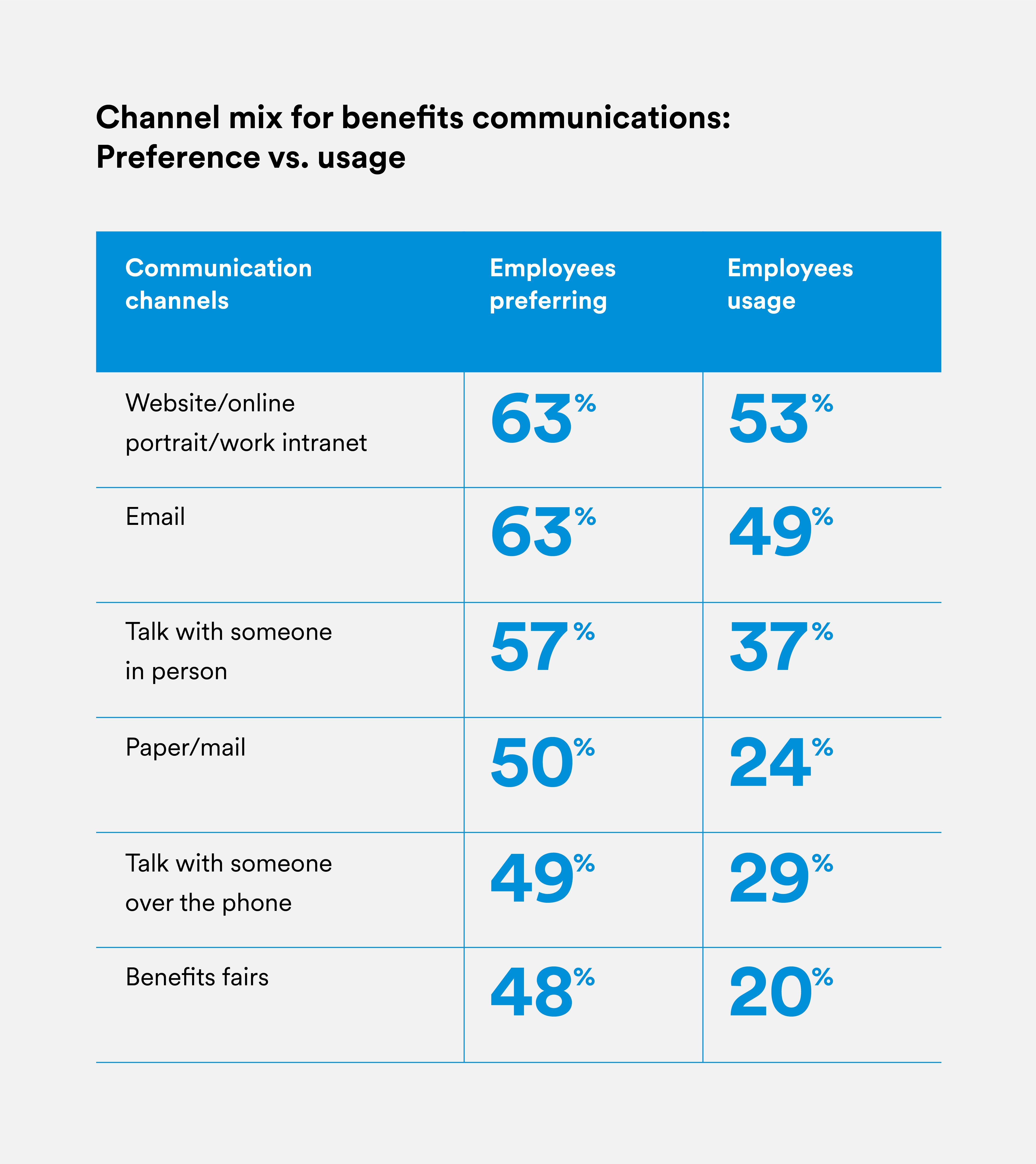The Whole Employee
Key takeaways:
Effective benefits communications:
- Increase employee awareness and employers’ benefits ROI
- Speak to the needs and goals of all employees
- Increase employees’ sense of being valued and appreciation of their employers
Looking to make a bigger impact with the benefits you offer? Look no further than better communications.
The old adage that retail success is based on location, location, location, has a parallel in the world of employee benefits: to generate full value from their investments, employers must go all in on benefits communication.
MetLife’s 2022 Employee Benefits Trends Study shows just how powerful effective communications are in engaging and retaining talent in a historically tight labor market by boosting employee awareness and appreciation of employer-provided benefits.
Capturing employees’ attention and influencing their behavior require highly relevant, personalized and accessible communications, with messaging that addresses employees’ diverse, individual needs and goals. Unfortunately, most organizations have yet to embrace these leading practices and thus have work to do in driving better talent outcomes.
Today’s benefits communications fall short
Most employers believe they are communicating effectively about benefits. But large proportions of employees disagree. In some cases, communications fail even to clarify what benefits are available. Our survey results provide a useful benchmark in defining minimum requirements and employee preferences for benefits communications.
"I hate saying this, but you've got to figure out the benefits system on your own because they're not going to teach you.”
Employees want to receive benefits information through a mix of channels. With remote working, email became the primary communication channel at many organizations. But with email fatigue now common, other channels are necessary to break through the noise and engage employees.
Best practices for communications
Engaging a heterogeneous workforce with diverging needs, learning styles and communications preferences, as well as different job functions and income levels, is no easy job. But the following actions are proven to promote better outcomes for employers and employees alike.
Cover the fundamentals:
The first job is to clarify what benefits are available, including voluntary and supplemental benefits. Then employers can educate employees on the benefits they offer by emphasizing their value and explaining how to use them appropriately (e.g. types of disabilities covered by disability and leave benefits, reducing out-of-pocket costs by combining health savings accounts with high-deductible health plans).
Be human:
A warm tone and personal anecdotes can illustrate how benefits help workers meet goals; for example, 401(k) materials should talk about long-term financial wellness, while information on employee assistance programs should address the importance of mental health.
Offer options:
Benefits information should be delivered via a mix of easily accessible channels to meet varying employee preferences. Based on the unique nature of the workforce, employers’ multi-channel strategies can include email, online portals, benefits hotlines, and virtual and in-person events. Some employers may consider proactive check-ins or one-on-one advisory sessions to ensure workers understand their choices.
Make it easy to connect:
Always-on channels (e.g., open chats, Slack channels and mobile apps) will let workers review content and ask questions in real time – when, where and how they want. Answers should be easily accessible, with consistent information across channels and direct links to all the details (e.g., online portals or handbooks).
Think two-way:
Two-way communications channels can inform ongoing refinements to benefits portfolios and help improve the efficacy of the communications themselves. For instance, post-enrollment pulse surveys and other listening mechanisms can tell employers if they’re communicating effectively and where they can improve.
Get creative with content:
Large employers may want to consider explainer videos and podcasts to satisfy visual and aural learners. Organizations that conduct town hall meetings, lunch-and-learns and other events should record and make them available to employees who can’t attend.
Integrate with HR comms:
Lastly, benefits information and stories should be integrated into other HR communications, such as those addressing PTO and scheduling policies or cultural matters, reinforcing that benefits are an essential feature of the ongoing employee experience and not something to consider only once a year. Such communications can also demonstrate employers’ commitments to employees’ overall well-being.
The business case for effective communications
The way benefits are presented may determine whether workers take advantage of and fully appreciate the value of employer offerings. Organizations that proactively tell relevant human stories in the right channels and commit to ongoing engagement will realize better results. The upside is clear and compelling:
These are invaluable outcomes for employers competing intensely for scarce talent.

